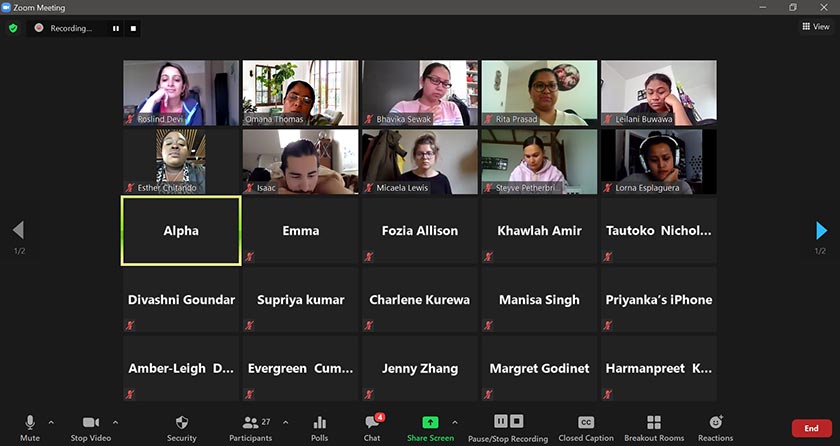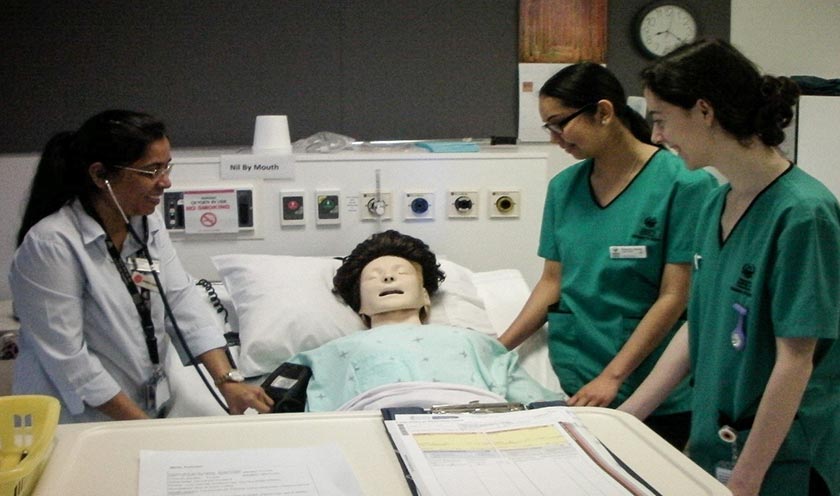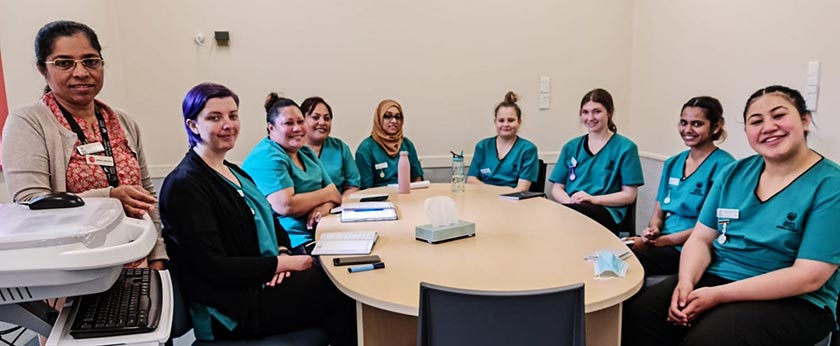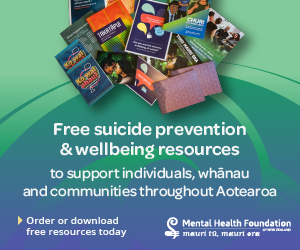The COVID-19 pandemic has disrupted the education of some 1.6 billion learners around the world, requiring a shift to distance learning.1
Data supports the use of some distance or blended education in health care.2 Use of videoconferencing tools (such as Zoom or Teams) has allowed nursing education to continue through a fundamentally new approach – where groups of students can learn together, remotely, in real time.3 The strengths and weakness of these novel teaching approaches in nursing education are now emerging.
Technology’s effect
Technology has made possible unprecedented connections between instructors and students, and among students. Initially based on a classic distance education format, technology has enhanced equitable education4 through an approach that has allowed students to work at their own pace, at any distance from the education provider.5 The latest technology, which combines technology-based learning with face-to-face learning6 has liberated education from the classically-structured classroom paradigm. Early work suggests that for many disciplines this blended teaching method may be superior to traditional face-to-face lecturing,7 yet nursing may be an outlier in these success stories.

In recent times, nursing education programmes have been slowly transforming teaching methods by reducing the number of lectures and using technology to drive self-directed, individualised learning. The COVID-19 lockdown brought an unprecedented paradigm shift as a result of social distancing, isolation and quarantine measures. For many educational institutions, Zoom and Teams were the educational approaches which allowed learning to continue.4, 5 Lecturers had to change teaching plans, ensure students had access to technology and update all electronic resources.
At the Manukau Institute of Technology (MIT) in South Auckland, our nursing students are streamed into two groups. Challenges arose for Stream A students, who do their clinical placements earlier in the year. When the lockdown was implemented, they were removed from clinical placements during the fifth of their seven-week clinical period. This meant they were unable to complete their learning assignments, which jeopardised their ability to demonstrate their clinical competency. However they were able to complete this work later, in one-on-one Zoom sessions with their lecturer. Stream B students continued their classroom learning via Zoom during the lockdown, and were able to do their clinical placements as normal later in the year.
Learning remotely
All of these changes were unexpected for students and teachers; however, through this experience, we had some notable successes.7 Teaching student nurses during lockdown required lecturers to quickly gain competence with new technologies and an untested route of delivery. For the didactic (teaching) component of undergraduate education, Zoom enabled and encouraged contact, greatly increasing cooperation between students and lecturers.
Breakout rooms (a feature of Zoom, allowing a meeting to break up into separate sessions) enhanced interactive learning and interested students received extra tutorials. Virtual lectures were recorded and catalogued, so students who were unable to join the online classroom still had access to the learning materials.4 In certain situations, this platform allowed two individuals to co-teach, bringing unprecedented synergy.2 Thus, for the didactic portion of nursing education, students kept pace with the historic learning milestones.
Challenges with remote learning
However, the move to more remote education has highlighted significant challenges that distance learning poses for nursing. Some of these challenges are easy to address, such as students lacking computer devices or having problems with internet connectivity. Other challenges, such as students experiencing a reduced attention span during online learning, compared to face-to-face sessions,8 are hard to surmount.
The main insurmountable challenge in remotely educating nurses is the need to provide students with the hands-on, mentored experience of simply observing the actions of working nurses…
The main insurmountable challenge in remotely educating nurses is the need to provide students with the hands-on, mentored experience of simply observing the actions of working nurses, such as answering call bells and interacting with patients.9 We do not currently have an educational approach to achieve the equivalent of the hands-on practical nurse education students require and the immersion into the nursing professional culture in practice.

During the COVID-19 crisis, simulation – whether virtual or interactive – was used as the best-available option for meeting requirements for clinical-placement hours.9
Nursing is fundamentally a service career, involving patient care and a practice profession. Technology-focused education delivery has a place in didactic teaching in nursing education, but lacks the interpersonal interactions necessary for nurses to become competent providers of holistic patient-centred care.10 Moving didactic teaching to a distance platform makes sense, but we cannot educate nurses to enter a practice profession without the human interaction patient-centred nursing care requires.
References
- United Nations. (2020). Policy brief: Education during COVID-19 (PDF, 668 KB).
- Sternberger, C. S., Deal, B., & Fountain, R. A. (2011). Multimedia conferencing between two schools of nursing. Nursing Education Perspectives, 32(1), 41-43.
- Moseley, M. (2020). UNIVERSITY CHALLENGED. Community Practitioner, 93(4), 18-19.
- Sayem, A. S. M., Taylor, B., McClanachan, M., & Mumtahina, U. (2017). Effective use of Zoom technology and instructional videos to improve engagement and success of distance students in engineering. In 28th Annual Conference of the Australasian Association for Engineering Education (AAEE 2017) (p. 926). Australasian Association for Engineering Education.
- Dhawan, S. (2020). Online learning: A panacea in the time of COVID-19 crisis. Journal of Educational Technology Systems, 49(1), 5-22.
- Al‐Qahtani, A. A., & Higgins, S. E. (2013). Effects of traditional, blended and e‐learning on students’ achievement in higher education. Journal of Computer Assisted Learning, 29(3), 220-234.
- Rahiem, M. D. (2020). The emergency remote learning experience of university students in Indonesia amidst the COVID-19 crisis. International Journal of Learning, Teaching and Educational Research, 19(6), 1-26.
- Mukhtar, K., Javed, K., Arooj, M., & Sethi, A. (2020). Advantages, limitations and recommendations for online learning during COVID-19 pandemic era. Pakistan Journal of Medical Sciences, 36(COVID19-S4), S27-S31.
- Wild, L. M., Congdon, B., Boyle, K., Provost, V. P., Schlesinger, M., Salyers, V., & Nordgren, M. (2020). Innovations in Nursing Education: Recommendations in Response to the COVID-19 Pandemic.
- Dean, S., Lewis, J., & Ferguson, C. (2017). Is technology responsible for nurses losing touch? Journal of Clinical Nursing, 26(5-6), 583-585





